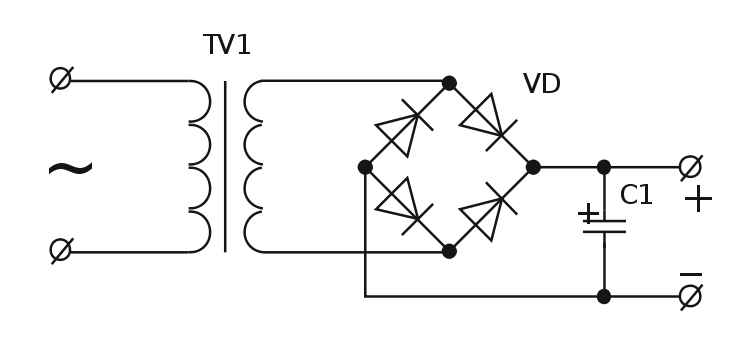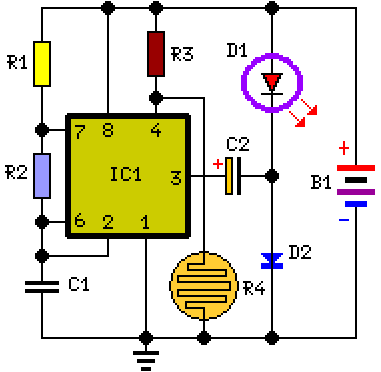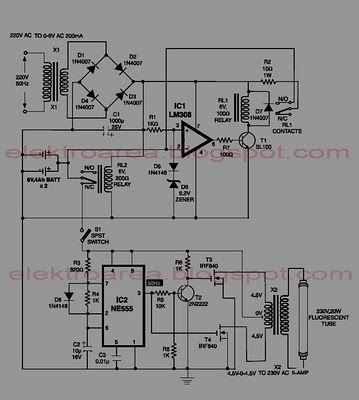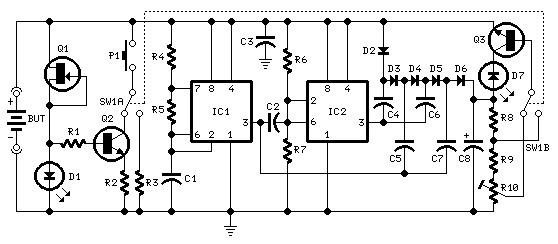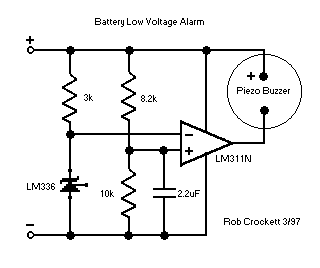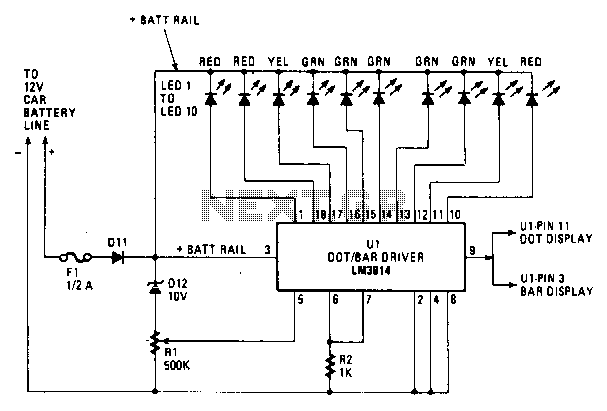
universal battery charger
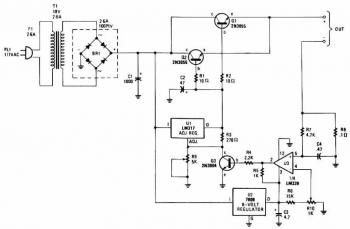
The charger's output voltage is adjustable and regulated, featuring an adjustable constant-current charging circuit that is compatible with most NiCad batteries. It is capable of charging a single cell or multiple series-connected cells with a maximum voltage of 18V. Power transistors Q1 and Q2 function as series regulators to manage the output voltage and charge current of the battery charger. An LM-317 adjustable voltage regulator provides the drive signal to the bases of power transistors Q1 and Q2. A potentiometer, R9, is used to set the output voltage level. A current sampling resistor, R8 (0.1 ohm/5W), is placed between the negative output lead and circuit ground. For each amp of charging current that passes through R8, a voltage of 100mV is generated across it. This voltage is sent to one input of comparator U3, while the other input is connected to variable resistor R10. As the charging voltage across the battery diminishes, the current through R8 decreases, leading to a reduction in the voltage at pin 5 of U3. Consequently, the output of the comparator decreases, turning Q3 off, which completes the feedback loop necessary to regulate the battery's charging current.
The described charger circuit employs a robust architecture that effectively manages the charging process for NiCad batteries. The adjustable output voltage feature allows flexibility in charging different battery configurations, accommodating both single cells and series arrangements up to 18V. The use of power transistors Q1 and Q2 as series regulators is pivotal for maintaining a stable output voltage, ensuring that the charger adapts to varying load conditions without compromising performance.
The LM-317 voltage regulator plays a crucial role in this design, providing a precise and adjustable voltage reference that governs the base drive of the power transistors. The incorporation of potentiometer R9 allows for fine-tuning of the output voltage, enabling users to set the charger according to the specific requirements of the battery being charged.
The current sampling mechanism utilizing resistor R8 is an essential component for monitoring the charging current. By generating a voltage proportional to the current flowing through it, R8 provides real-time feedback to comparator U3. This feedback is critical for implementing a closed-loop control system that adjusts the charging current dynamically. The comparator's operation ensures that as the battery reaches its charge voltage, the current is reduced, preventing overcharging and extending the battery's lifespan.
The interaction between R8, U3, and Q3 creates a self-regulating system that enhances the reliability of the charger. As the battery voltage rises and the current decreases, the feedback loop effectively turns off transistor Q3, thereby reducing the charging current to a safe level. This intelligent regulation mechanism is vital for maintaining the health and efficiency of NiCad batteries during the charging process. Overall, this charger design exemplifies a practical application of electronic components in battery management systems, ensuring optimal performance and safety.The charger`s output voltage is adjustable and regulated, and has an adjustable constant-current charging circuit that makes it easy to use with most NiCad batteries. The charger can charge a single cell or a number of series-connected cells up to a maximum of 18V. Power transistors Q1 and Q2 are connected as series regulators to control the batte ry charger `s output voltage and charge-current rate. An LM-317 adjustable voltage regulator supplies the drive signal to the bases of power transistor Q1 and Q2. Potensiometer R9 sets the output-voltage level. A current sampling resistor, R8 (a 0. 1 ohm/5W unit), is connected between the negative output lead and circuit ground. For each amp of charging current that flows through R8, a 100mV output is developed across it. The voltage developed across R8 is fed to one input of comparator U3. The other input of the comparator is connected to variable resistor R10. As the charging voltage across the battery begins to drop, the current through R8 decrease. Then the voltage feeding pin 5 of U3 decreases, and the comparator output follows, turning Q3 back off, which completes the signal`s circular path to regulate the battery`s charging current.
🔗 External reference
The described charger circuit employs a robust architecture that effectively manages the charging process for NiCad batteries. The adjustable output voltage feature allows flexibility in charging different battery configurations, accommodating both single cells and series arrangements up to 18V. The use of power transistors Q1 and Q2 as series regulators is pivotal for maintaining a stable output voltage, ensuring that the charger adapts to varying load conditions without compromising performance.
The LM-317 voltage regulator plays a crucial role in this design, providing a precise and adjustable voltage reference that governs the base drive of the power transistors. The incorporation of potentiometer R9 allows for fine-tuning of the output voltage, enabling users to set the charger according to the specific requirements of the battery being charged.
The current sampling mechanism utilizing resistor R8 is an essential component for monitoring the charging current. By generating a voltage proportional to the current flowing through it, R8 provides real-time feedback to comparator U3. This feedback is critical for implementing a closed-loop control system that adjusts the charging current dynamically. The comparator's operation ensures that as the battery reaches its charge voltage, the current is reduced, preventing overcharging and extending the battery's lifespan.
The interaction between R8, U3, and Q3 creates a self-regulating system that enhances the reliability of the charger. As the battery voltage rises and the current decreases, the feedback loop effectively turns off transistor Q3, thereby reducing the charging current to a safe level. This intelligent regulation mechanism is vital for maintaining the health and efficiency of NiCad batteries during the charging process. Overall, this charger design exemplifies a practical application of electronic components in battery management systems, ensuring optimal performance and safety.The charger`s output voltage is adjustable and regulated, and has an adjustable constant-current charging circuit that makes it easy to use with most NiCad batteries. The charger can charge a single cell or a number of series-connected cells up to a maximum of 18V. Power transistors Q1 and Q2 are connected as series regulators to control the batte ry charger `s output voltage and charge-current rate. An LM-317 adjustable voltage regulator supplies the drive signal to the bases of power transistor Q1 and Q2. Potensiometer R9 sets the output-voltage level. A current sampling resistor, R8 (a 0. 1 ohm/5W unit), is connected between the negative output lead and circuit ground. For each amp of charging current that flows through R8, a 100mV output is developed across it. The voltage developed across R8 is fed to one input of comparator U3. The other input of the comparator is connected to variable resistor R10. As the charging voltage across the battery begins to drop, the current through R8 decrease. Then the voltage feeding pin 5 of U3 decreases, and the comparator output follows, turning Q3 back off, which completes the signal`s circular path to regulate the battery`s charging current.
🔗 External reference
Warning: include(partials/cookie-banner.php): Failed to open stream: Permission denied in /var/www/html/nextgr/view-circuit.php on line 713
Warning: include(): Failed opening 'partials/cookie-banner.php' for inclusion (include_path='.:/usr/share/php') in /var/www/html/nextgr/view-circuit.php on line 713
